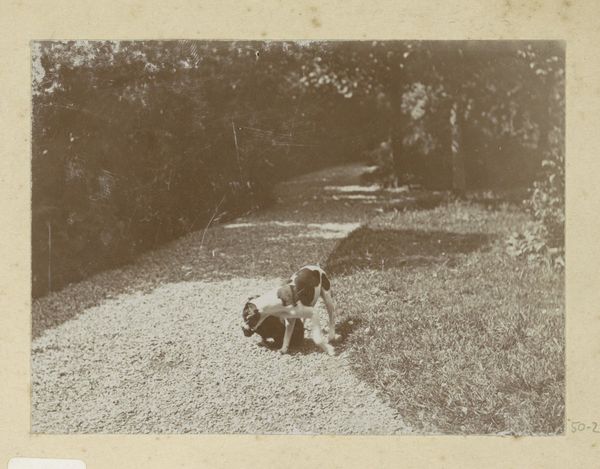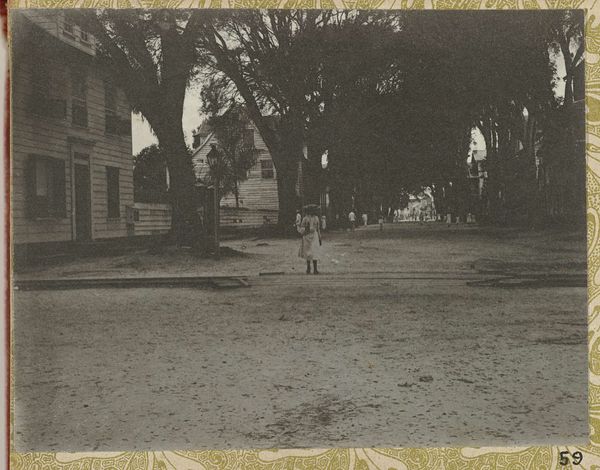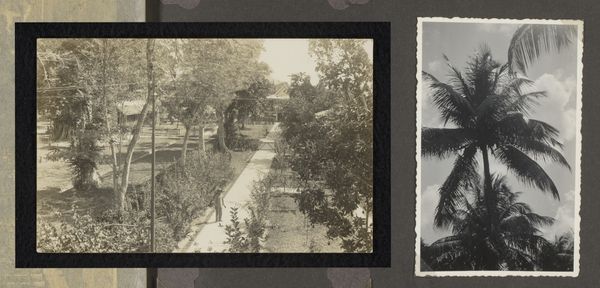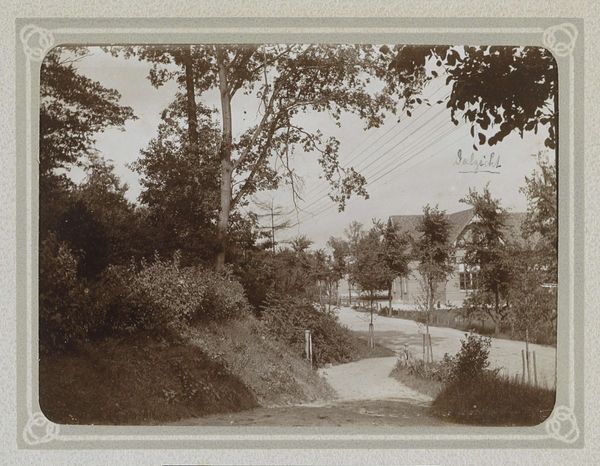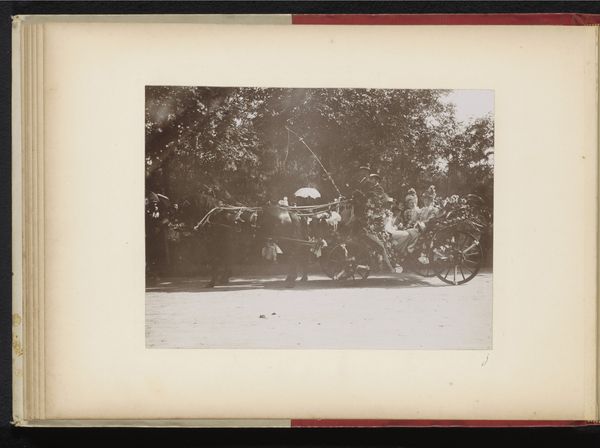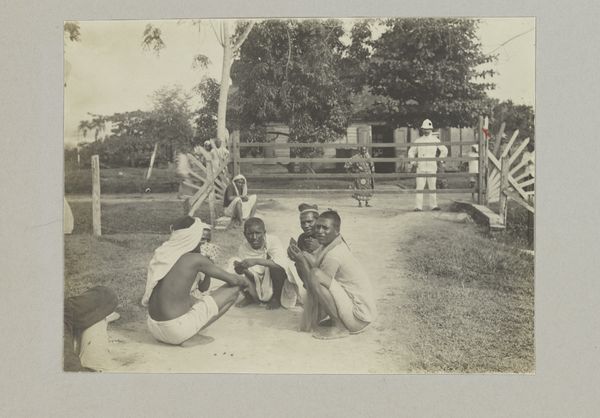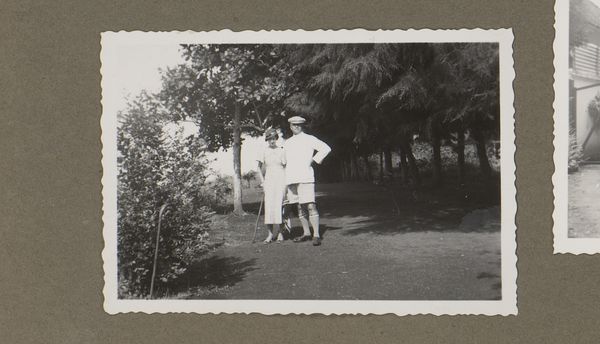
Oprijlaan van tabaksonderneming Helvetia van de Deli Maatschappij op Sumatra c. 1900 - 1920
0:00
0:00
print, photography
# print
#
landscape
#
street-photography
#
photography
Dimensions: height 76 mm, width 137 mm
Copyright: Rijks Museum: Open Domain
Curator: This print shows "Oprijlaan van tabaksonderneming Helvetia van de Deli Maatschappij op Sumatra," dating roughly from 1900 to 1920. It resides in the Rijksmuseum collection. Editor: The high contrast and linear composition lend it an interesting almost architectural rigidity, which I find surprisingly sterile. What can you tell me about its physical attributes? Curator: As a photograph, its tonal range certainly informs its somber affect, you’re right. It’s printed in a landscape format, displaying a perspective technique with linear recession used to lead the viewer to the building in the distance. Note the rhythmic balance achieved by the lines of the trees on the left mirroring the guardrails on the right. Editor: Rhythm it may have, but this is also about the labor embedded within landscape photography. It reveals much about the exploitation integral to the plantation system during that era. Curator: Indeed, the visual is not simply picturesque; it implicates socioeconomic forces and is a direct outcome of its production context. Editor: Precisely. These guardrails, the ordered rows of trees – these elements speak to the deliberate control over the landscape—all sustained through considerable labor that isn't necessarily showcased, although visibly apparent, but integral to that scenic vista. The very act of photographing this company Avenue encapsulates a particular point of view that reinforces power dynamics and global commerce that should never be forgotten when gazing upon such landscape images. Curator: Looking again at the photograph, that contrast between a somewhat staged vista and that underlying context certainly impacts my understanding now. Editor: These photographs often become historical documents that provide some visibility to colonialist structures; viewing the details carefully gives access into these important discussions surrounding its origin and production, in addition to considering its aesthetic value.
Comments
No comments
Be the first to comment and join the conversation on the ultimate creative platform.

